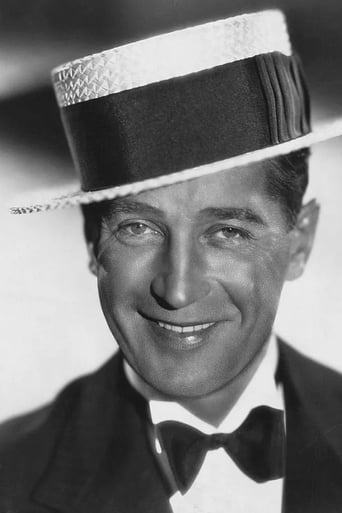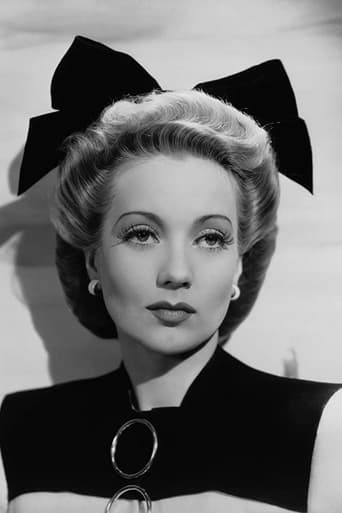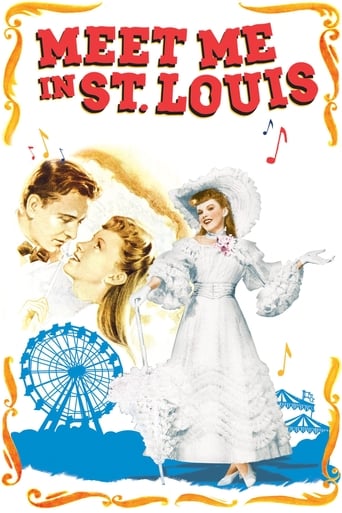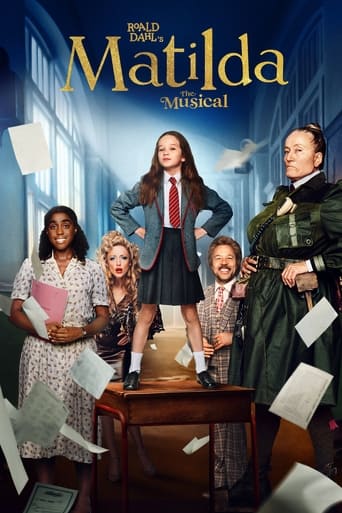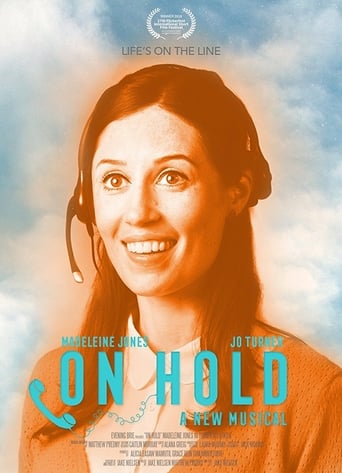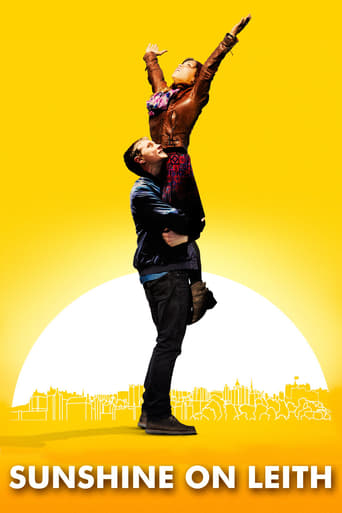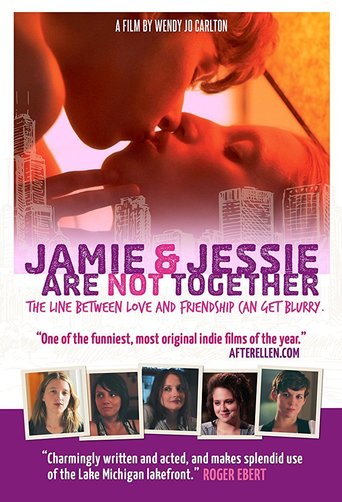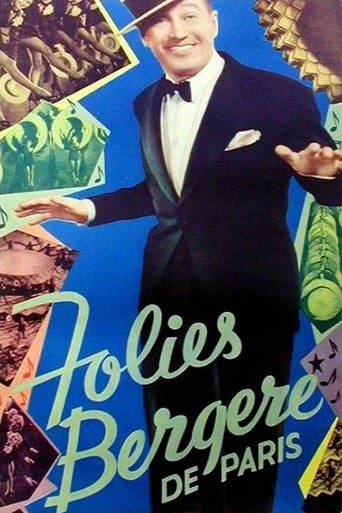
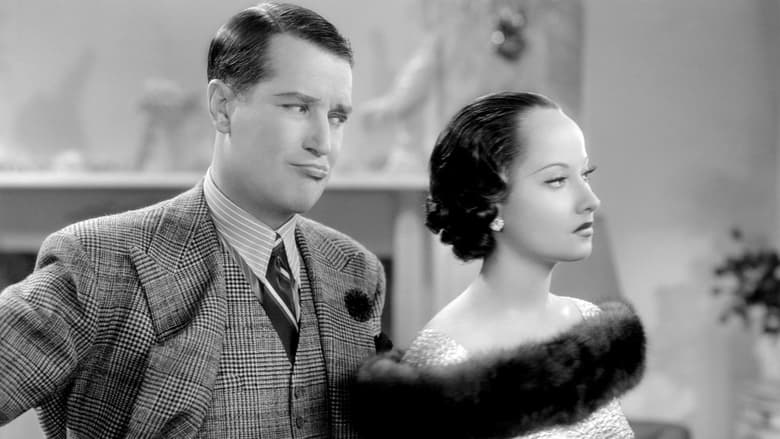
Folies Bergère (1935)
An entertainer impersonates a look-alike banker, causing comic confusion for wife and girlfriend.
Watch Trailer
Cast
Similar titles
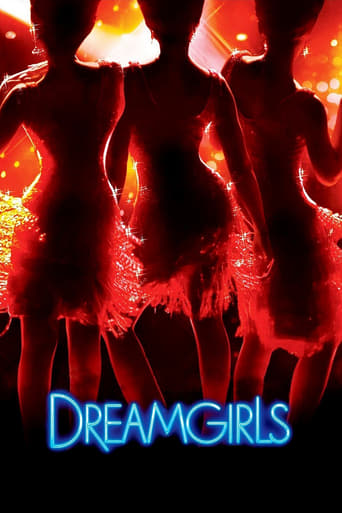
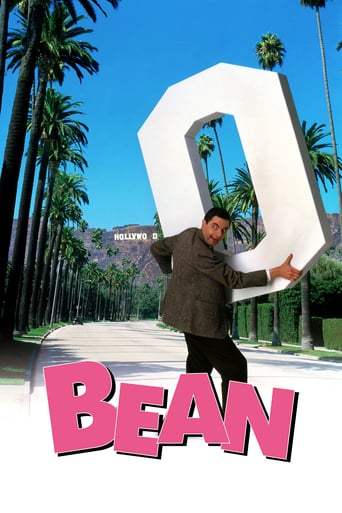
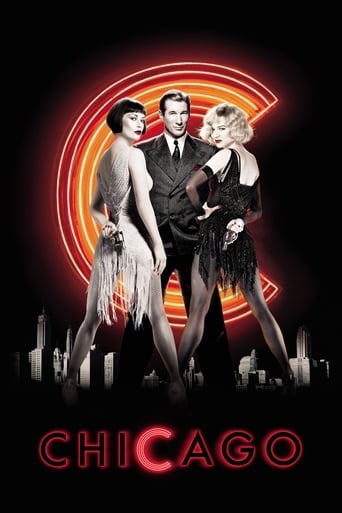
Reviews
Best movie of this year hands down!
The Age of Commercialism
One of my all time favorites.
If the ambition is to provide two hours of instantly forgettable, popcorn-munching escapism, it succeeds.
Copyright 27 February 1935 by 20th Century Pictures, Inc. Presented by Joseph M. Schenck. Released through United Artists. New York opening at the Rivoli, 24 February 1935. Australian release: 5 June 1935. 9 reels. 83 minutes. U.K. release title: The MAN FROM THE FOLIES BERGERE.SYNOPSIS: Baron hires an impersonator who falls for the Baron's wife.NOTES: Academy Award, Dave Gould, Dance Direction (for the "Straw Hat" number in this film and the "I've Got a Feelin' You're Foolin'" number in Broadway Melody of 1936).Re-made as That Night In Rio (1941) and On the Riviera (1951).A dismal failure on Broadway, The Red Cat opened at the Broadhurst on 19 September 1934 and closed after only 14 performances. Reviews were uniformly scathing: "A dated comedy with an old-hat plot and threadbare situations." Bertram Harrison directed a cast that included Francis Lister (in a dual role as the entertainer who impersonates a look- alike nobleman), Ruth Weston, Tamara Geva, Rex O'Malley, Porter Hall, and Barnett Parker.20th Century made a French version of Folies Bergére simultaneously with the English-language version. And I do mean simultaneously. I've not seen the French version, L'Homme des Folies Bergére, but an examination of the stills reveals that not only were exactly the same camera set-ups employed, but exactly the same extras occupy exactly the same positions in both movies. For this reason, the French version is officially credited to Roy Del Ruth, though the actors were actually directed by Marcel Achard, who translated (and some say improved) the dialogue, while Albert Willemetz re-penned the French song lyrics. Aside from Chevalier, most of the players were replaced. Natalie Paley was assigned the Merle Oberon role, and Sim Viva was Mimi. Others in the French version included André Berley, Jacques Louvigny, Fernand Ledoux, H. Ramsey Hill, André Cheron, Jules Raucourt, Ferdinand Munier, Marcelle Corday, Barbara Leonard, Georges Renavent, Albert Polet, Mario Dominici and Olga Borget.COMMENT: The old The Guardsman plot — deduct five points for censorship emasculation — splendidly enacted by Chevalier and company, with Miss Oberon never looking more beautiful (soft focus photography by Barney McGill and costumes by Omar Kiam) or Miss Sothern more sexy. Director Roy Del Ruth's marvelous sense of comedy and expert timing makes the most of the witty screenplay. The songs are delightfully tuneful and include two fabulous production numbers — Gould won the Dance Direction Academy Award for 1935 — that out-Busby Berkeley. These musical numbers rejoice in sharp photography by Peverell Marley. Richard Day's magnificent sets are also a joy to behold and the sound recording could not be bettered today. The smooth film editing reflects Hollywood craftsmanship at its best. The film is a credit to all involved. Truly outstanding entertainment.
Folies Bergère de Paris (Roy Del Ruth, 1935) is a Lubitsch-like confection with numbers inspired by the kaleidoscopic choreography of Busby Berkeley. It's also among the best films I've caught this year. The story sees a vaudeville entertainer (Maurice Chevalier with his familiar persona) impersonate a baron (Chevalier again), leading to romantic complications for both. Ann Sothern is the entertainer's good time gal, with Merle Oberon the baron's flighty wife. It's witty and invigoratingly entertaining, with a fine performance by Chevalier in his dual role and a top supporting cast that includes Eric Blore, Robert Greig and Halliwell Hobbes. Despite the enjoyable plotting, the film's finest moments come through the slew of great numbers at both the beginning and the end of the film. The Singing a Happy Song finale, which won an Oscar for dance direction and features several hundred straw hats of varying sizes, is really something, but all the tunes are great: Valentine, Rhythm of the Rain, Au Revoir l'Amour and You Took the Words Right Out of My Mouth. This was Chevalier's last Hollywood musical until Gigi, 23 years later.
In the early to mid 1930s, Maurice Chevalier made some exceptional American films such as LOVE ME TONIGHT and THE MERRY WIDOW. While I usually am not a fan of Jeanette MacDonald films, his presence elevated them to great heights thanks to his on screen personality and lovely singing voice. While this film is fun and is well worth seeing, it is clearly several steps below these other films in quality--mostly because the script is a tad silly. The main idea is a giant cliché. The audience is supposed to believe that there are two men who are unrelated who look and talk exactly alike. While such an idea worked pretty well in THE PRINCE AND THE PAUPER and THE PRISONER OF ZENDA, here the writing wasn't good enough to enable many audience members to accept this idea--especially because the two are so exact that even a wife cannot tell the difference! If you can ignore the central idea as well as the film going on a bit too long and having too many Busby Berkeley-style dance numbers, you are left with a film that is still worth your time and is a little better than your standard time-passer.
Slight Spoiler.I finally had a chance to watch "Folies Bergère de Paris", a delightful Fox musical comedy, directed by Roy Del Ruth and starring Maurice Chevalier, Ann Southern, and Merle Oberon. I was only familiar with the 1940 remake "That Night in Rio" (also excellent) starring Alice Faye and Don Ameche. I heard good things about this original version which is brisker and more tightly wound than the later version, and I wanted to see it very much.In 1935 Fox filmed English and French versions of the story on the same set. The French version, simply titled "Folies-Bergère", was released in 1936. I saw the English version recently and it was fantastic.In his Paramount musicals, most notably those of Lubitsch, Maurice Chevalier, with his lighthearted French accent and aggressive suavity, was the epitome of continental charm. Here in "Folies Bergere", he does an impressive job of personifying two distinct roles: playing the rowdy stage entertainer Eugene Charlier and an aristocratic banker named Baron Cassini, creating some very funny moments and entertaining plot twists. Chevalier is lively without overplaying the parts, though the roles lack the sexual aggressiveness he displayed for his Lubitsch work. Ann Southern does a fine job playing Chevalier's whining and annoying girl Mimi, later reprised by Carmen Miranda in "That Night in Rio". Merle Oberon in her first major starring role looks marvelous as the Baroness Genevieve Cassini, later played by Alice Faye. "Folies Bergere" opens and ends with grand and rousing musical numbers. The first number is a very jovial one, a piece called "Rhythm of the Rain" featuring Chevalier effortlessly dancing and singing in the rain against the fake backdrop of the Folies Bergere. He is accompanied by Mimi and hordes of chorus girls carrying umbrellas. The final number - a Busby Berkeley-like extravaganza involving Chevalier and his fellow performers creating a gigantic hat worn by Chevalier himself - is an eye-popping piece of inspired choreography. This number is so merry and exuberant that you somehow forget the rest of the movie.Del Ruth's direction is as always modestly graceful, and captures the atmospheric gusto and vivacity of the Parisian cabaret setting. This is my sixth of Del Ruth's movies and it is one of his best. If you get a chance to see "Folies Bergere de Paris", make sure you do. You won't be disappointed. Even if you don't like this sort of stuff, it deserves to be seen, at least for Mr. Chevalier. This was one of his last distinguishable performances in the 1930s before returned to France and not to return to Hollywood until 1957 with Billy Wilder's "Love in the Afternoon".
